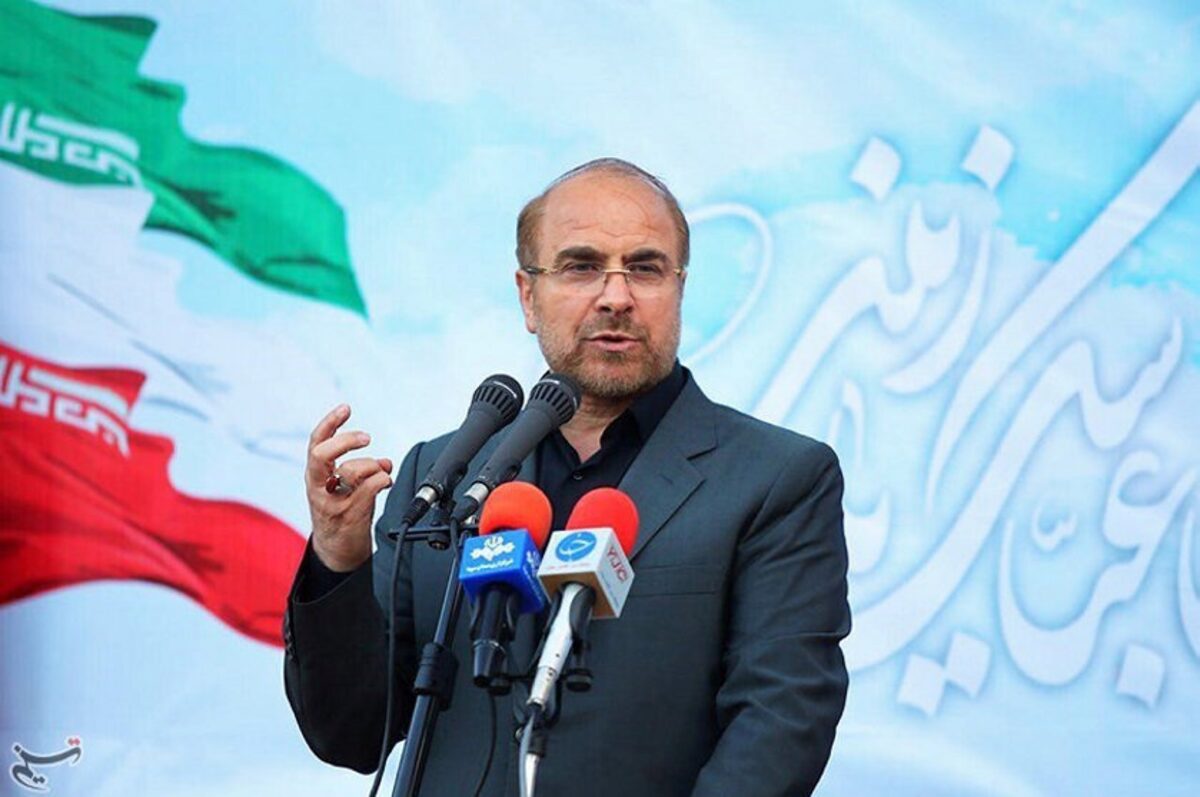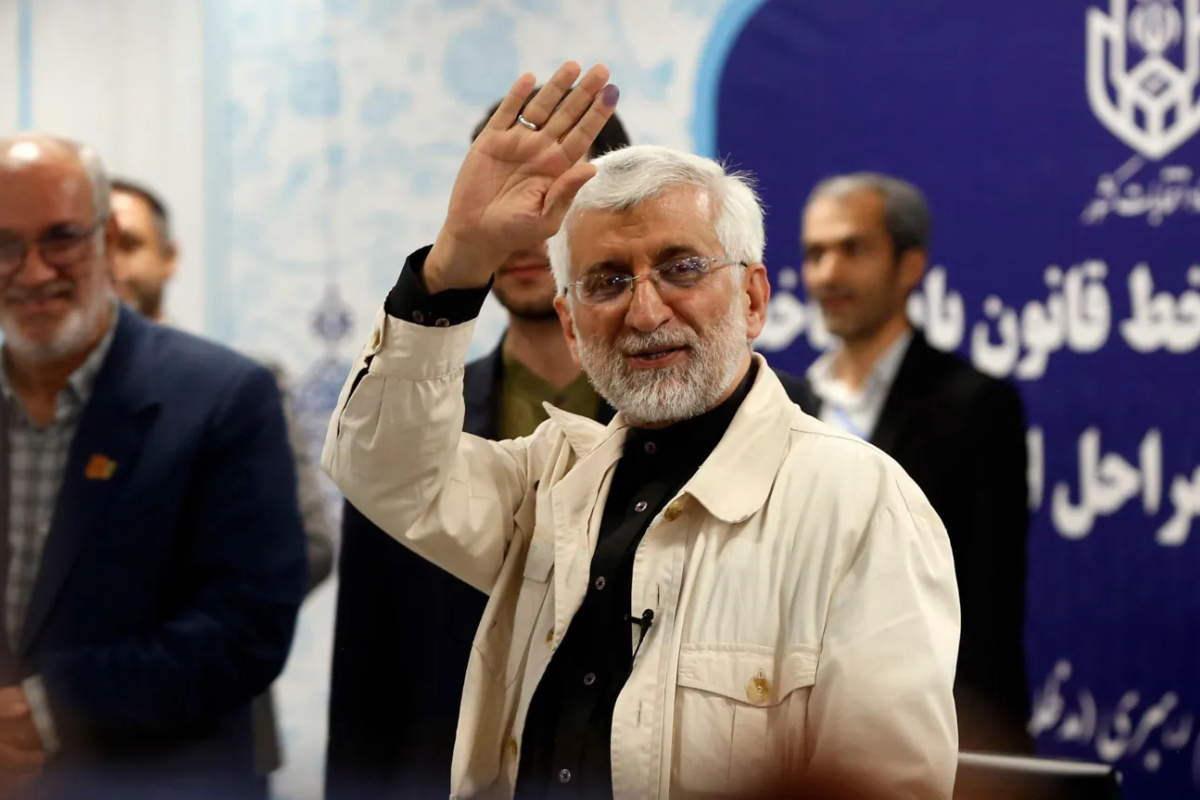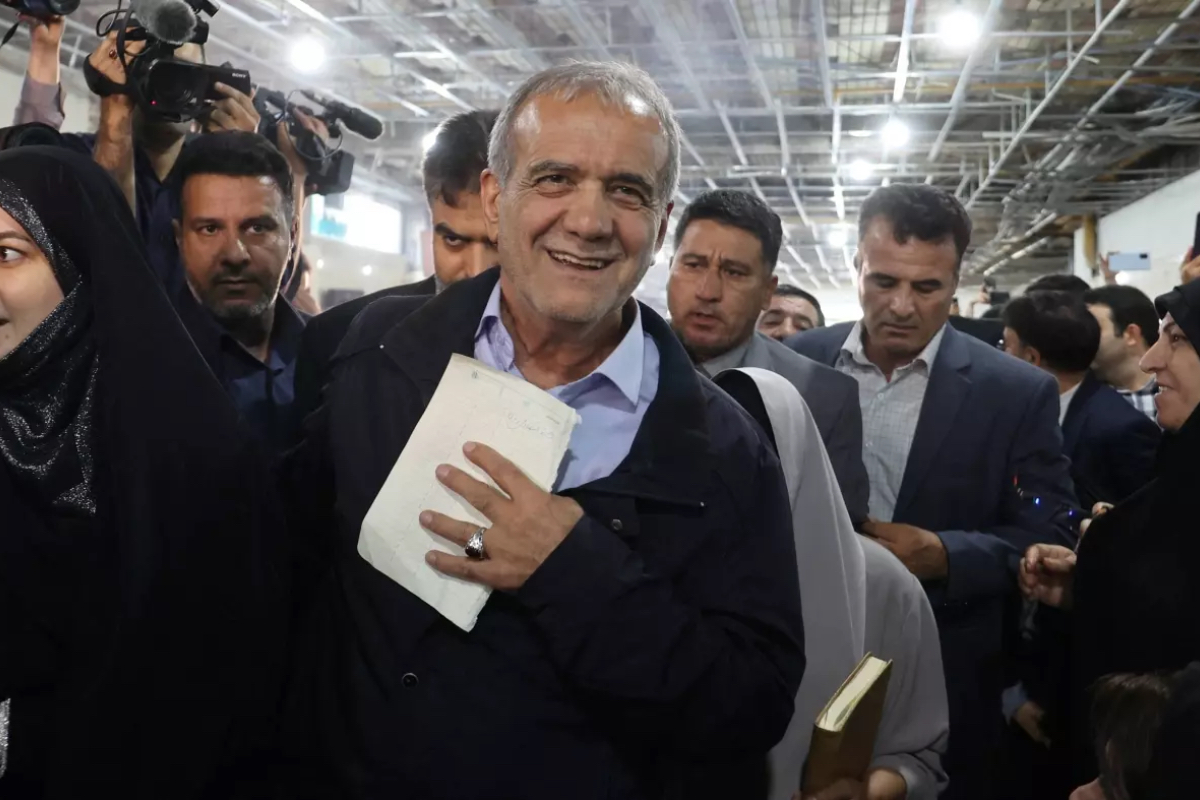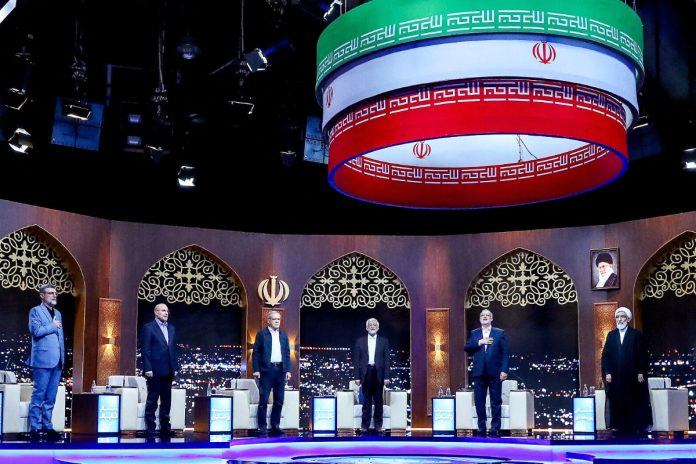The hurried race to elect Iran’s next president following the death of President Ebrahim Raisi in a helicopter crash in May has entered the campaign phase. Iran is scheduled to hold special elections on June 28, as regional tensions are reaching a boiling point on a dangerous precipice toward all-out regional war. Analysts say the vote will be neither free, nor likely to bring about any significant change in the country, but the surprise inclusion of a moderate, reformist politician for the candidacy could be a game-changer.
Electoral Process Set in Motion
On June 9, the Guardian Council—a panel of clerics and jurists overseen by Iran’s Supreme Leader Ali Khamenei—approved the final slate of six of the 80 registered presidential candidates, a starting gun for a condensed campaign to replace Raisi. Five of the six candidates are hardliners, generally defined as seeking more repressive restrictions in line with Islamic sharia law, with close ties to the Islamic Revolutionary Guard Corps (IRGC). The one outlier is Masoud Pezeshkian, the lone reformist.
The council again barred former president Mahmoud Ahmadinejad, a firebrand populist known for the crackdown that followed his disputed 2009 re-election, from running. The council also blocked former three-time parliament speaker Ali Larijani, a conservative with strong ties to Iran’s clerical establishment. It was the second election in a row in which Larinjani was barred from running.
Former Iranian Central Bank chief Abdolnasser Hemmati, who ran in 2021, and Eshaq Jahangiri, the vice president under moderate President Hassan Rouhani, were also disqualified.
Who Is Eligible?
According to Iran’s constitution, the president must be part of the country’s “religious and political elite,” possess Iranian nationality, and be of “Iranian origin.” Additionally, the president must adhere to the “fundamentals of the Islamic Republic of Iran and the official religion of the country,” ensuring that all candidates support Iran’s theocratic system. Consequently, non-Muslims and Muslims who are not adherents of the Shiite sect, which is dominant in Iran, are ineligible to run for office.
The Interior Ministry stipulates further requirements for candidates: they must be between 40 and 75 years old, have a minimum of four years’ experience in a senior government position, and have no criminal record.
Although women are permitted to register as candidates, none have ever received final approval from the Guardian Council. Seven of the 80 candidates dismissed by the council for the special election were women. It is widely assumed that women are effectively excluded from candidacy.
The Candidates
Mohamed Baqer Qalibaf, Mainstream Conservative
Mohamed Baqer Qalibaf is expected to be Khamenei’s favored candidate. Called “a leading contender” by the pro-government publication Tehran Times, Qalibaf is a mainstream conservative who’s served as Iran’s police chief, mayor of Tehran, speaker of the parliament—the Islamic Consultative Assembly—and twice unsuccessful presidential candidate in 2005 and 2013. Qalibaf is also a former commander of the IRGC air force.
Qalibaf is notorious for having backed harsh crackdowns on protesters, once bragging about having ordered the use of live ammunition against students in 2003. Ghalibaf’s role in crackdowns, including against Iranian university students in 1999, may be viewed differently after years of unrest that have gripped Iran. His track record means that advocates for liberalization of social and political life inside Iran can expect little or no change if Qalibaf wins the presidency, though his attitude toward protests and repressive laws such as the hijab rules are likely to be somewhat less extreme than the ultraconservative challengers.

Saeed Jalili, Ultraconservative Fundamentalist
The leading ultraconservative challenger is Saeed Jalili, a former adviser to Ahmadinejad who led the nuclear talks with the West until 2013. Jalili is now the Iranian supreme leader’s representative to the Supreme National Security Council (SNSC), and while lacking the extensive political experience of some of the other candidates, Jalili can curry favor with the puritan revolutionary fringes of Iran’s conservative political camp. He has run for president unsuccessfully three times before.
According to an interview with a Mashhad cleric, Ahmad Alam-ol-Hoda, Jalili received a doctorate in Political Science from Imam Sadegh University and was well-regarded as a fighter in the Iran-Iraq War, losing one leg in a military operation against Basra and earning the nickname “living martyr.” Jalili previously served as the Secretary of the Supreme National Security Council from 2007-2013 and the lead nuclear negotiator for Iran in 2008. Now current CIA Director William Burns—at the time Undersecretary of State for Political Affairs—described a meeting with Jalili in his 2019 memoir: “Jalili then embarked on nearly forty minutes of meandering philosophizing about Iran’s culture and history, and the constructive role it could play in the region. He could be stupefyingly opaque when he wanted to avoid straight answers, and this was certainly one of those occasions. He mentioned at one point that he still lectured part-time at Tehran University. I did not envy his students.”
During live debates, Jalili said that Iran’s relationship with the West was not in need of repair, and if Jalili successfully ascends to the presidency, it might cause concern among those who welcome detente between Iran and the West.

Masoud Pezeshkian, Moderate Reformist
Masoud Pezeshkian, a reformist and advocate for reviving nuclear talks with the West, has challenged key elements of Iran’s rigid and often cryptic system. Pezeshkian—whose last name means “of physician lineage”—is a surgeon and the former health minister under former president Mohammad Khatami. The longtime member of parliament has publically criticized the security forces’ violent repression of the protests in 2023 commemorating the death of Mahsa Amini, the 22-year-old woman who died in the custody of Iran’s morality police after being arrested for not wearing her headscarf properly. Pezeshkian, who did not rise to power through corruption or influential family ties, will face a panoply of five right-wing opponents who did, further distinguishing him from his rivals.
During a five-hour live debate on June 18, Pezeshkian said he would seek improved regional and global relations and ease internet restrictions in Iran, where Facebook, Instagram, Telegram, and X are banned. The biggest challenge for Pezeshkian, according to analysts of Iran’s politics, is that voters are disaffected and cynical about Iran’s politics, and such apathy is likely to lead people who otherwise might vote for a reformist to stay home.

The remaining candidates are Mostafa Pourmohammadi, a hardline cleric, Amirhossein Qazizadeh Hashemi, a fringe conservative, and Alireza Zakani, a hardliner politician. Mostafa Pourmohammadi, the only cleric in the running, is a former justice and interior minister who, along with former President Ebrahim Raisi, was a member of the so-called “Death Committee” that approved the execution of more than 5,000 political prisoners in the late 1980s. Hashemi is one of a dozen vice presidents—better described as deputy presidents—and oversees the Foundation of Martyrs and Veterans that provides benefits for veterans and the families of war casualties. Tehran’s conservative mayor and a former member of parliament Alireza Zakani is nicknamed the “revolutionary tank,” according to Iran Insight, and is known for a brash communication style and allegations of corruption. Zakani previously served as the chair of the JCPOA review committee, a position through which he articulated hardline dissatisfaction and the perception that the regime was being forced to make undue concessions.
What To Expect
Campaigning runs until June 26, two days before the vote. Although Iran’s elections can be surprising, a few factors allow for modest predictions.
First, Khamenei, who wields ultimate power in Iran, rules by preventing powerful figures from emerging. Khamenei worries that established figures can create movements within the regime structure that, combined with their knowledge of how the system works, can challenge his grip on power. As a result, past Iranian presidents have not been particularly powerful on major policy decisions in Iran, but set the domestic agenda.
The 85-year-old Supreme Leader, who is rumored to suffer from prostate cancer, has refused to endorse a successor, but it was long-rumored that Raisi was well-positioned to take over when Khamenei died. Raisi’s death opened the door not only for a new president, but a scramble for lesser likely but ambitious contenders to position themselves strategically in Iran’s government for the inevitable future.
Second, it’s often said that elections in Iran don’t matter, that all power rests with Iran’s unelected Supreme Leader, and that vote-counting by the Interior Ministry is opaque and easily rigged—as allegedly happened during the controversial reelection of then-President Mahmoud Ahmadinejad in 2009, according to Amnesty International. Critics argue that candidates who might challenge the system are nearly always eliminated by the Guardian Council, which is unelected, curating Iran’s options long before any ballots are cast.
Half-Azeri and half-Kurdish, some critics say that Pezeshkian’s inclusion by the Guardian Council was, in effect, a token gesture to the West, ushered through not for viability but for optics and evidence to defend a facade of legitimacy, if needed.
Third, given that none of the presidential candidates are likely to achieve overwhelming public support in the condensed campaign period, the election could lead to a runoff between frontrunners. Polling figures from Iran are notoriously hard to obtain or verify, and voter participation has been declining, with Iran’s parliamentary elections demonstrating the lowest voter turnout since the Islamic Republic’s founding in 1979 at 40 percent. Allegations have surfaced that Iranian officials may have instructed pollsters to withhold information, while government-owned polling agencies may fear that publication of their data could risk careers if their activity is perceived to be out of line by the election’s winner.
“Iranian politics has always been unpredictable,” a former Iranian official, who asked for anonymity, told Newsweek. “If [voter] turnout this year is around 40 percent, the worst candidate, Jalili, will have a chance to win. If it ends up around 50 percent, Qalibaf will win. And if turnout is 60 percent or higher, then Pezeshkian has a chance.”

